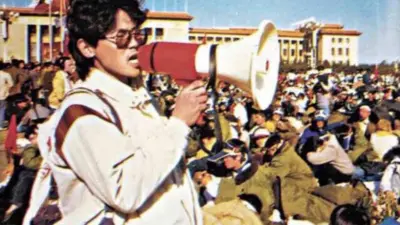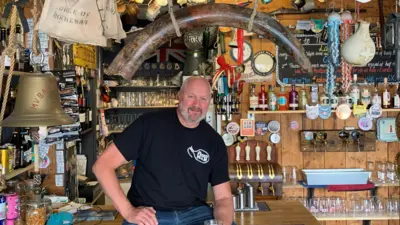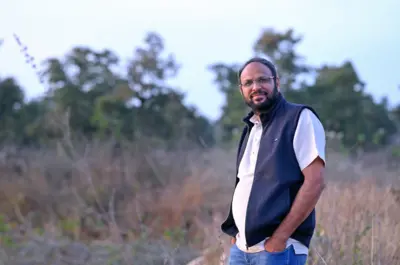We've updated our Privacy and Cookies Policy
We've made some important changes to our Privacy and Cookies Policy and we want you to know what this means for you and your data.
The 90-year-old camera still producing silver snaps
- By Robin Sheeran
- BBC News NI
How many photos do you have on your phone, and when did you last look at the ones from, say, two years ago?
German film director and photographer Wim Wenders reckons mobile phones have killed photography.
"The trouble with iPhone pictures is nobody sees them. Even the people who take them don't look at them any more, and they certainly don't make prints," he told BBC News NI.
Image source, Bettmann/Getty Images
But can old-style cameras still produce results? Is there any enthusiasm for the painstaking methods of developing prints?
With this in mind, we decided to take a trip back to the earliest form of amateur photography - using a 90-year-old box camera bought for £20.
From the 1880s to the late 1950s, these gadgets were as familiar as the little black phone is today.
How does black-and-white film photography work?
- The film is made up of layers of light-sensitive emulsion coated on a flexible base (ie the film). The film is exposed to light in a camera. This creates a negative image on the film.
- The film is then 'developed' using chemicals. Prints are made by projecting the image from the film onto light-sensitive paper. This photographic paper is then processed through a series of chemical baths.
- The processing of both film and paper must take place in darkened rooms (a 'darkroom') to avoid light reaching the light-sensitive emulsions.
There has been a revival in film photography in recent years, often with young people picking up their grandad's camera.
Such cameras can be bought very cheaply compared to their digital equivalents.
Dr Gil Pasternak of De Montfort University in Leicester, said these younger "digital natives" are drawn to the artistic possibilities of film.
"They consider it to be magical and unusual," he added.
An older group - the "non-digital natives" - is drawn to the nostalgic element of film that takes them back to their childhood, Dr Pasternak explained.
Useable box cameras can be picked up for under a tenner - they may be antiques but millions were made.
The BBC's bargain box is a 90-year-old Zeiss Ikon Box Tengor - £20 for what was a relatively sophisticated amateur camera back in 1928.
But would it still work?
Mervyn Smyth from community arts organisation Belfast Exposed agreed to take part in the experiment.
He would process and print two rolls of film - each containing just eight negatives.
Armed with a selection of photos taken around Belfast it took a couple of hours in the darkroom at Belfast Exposed - first processing the film and then making the prints.
It's a complex process involving silver salts, mercury and a lot of shuffling around in the dark.
At times film processing seems more like alchemy than chemistry - and the moment that the print begins to appear on the photosensitive paper is truly magical.
And the 90-year-old camera worked - the battered veteran apparatus took some decent photos - limited only by the competence of the photographer.
Image source, Getty Images
Mervyn Smyth was impressed: "I think the camera has worked perfectly. The pictures are pin-sharp, very well exposed and I think that this type of photography has proven the test of time.
"Even with a 90-year-old camera you're able to go out and get the pictures you want. We've proved when we processed and printed them that they're actually quality pictures."
In the digital era of talking fridges and self-driving cars there may yet be a place for vinyl records, books made of paper and perhaps even box cameras.
Top Stories
Features & Analysis
Most read
Content is not available








